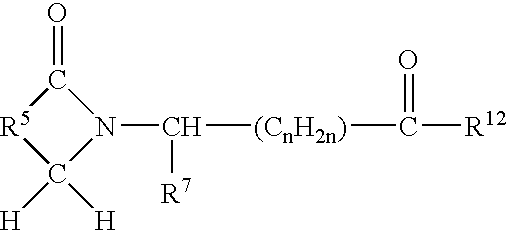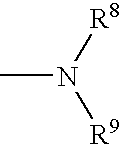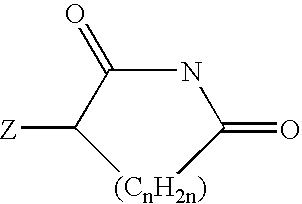Methods of Using and Compositions Comprising Selective Cytokine Inhibitory Drugs for Treatment and Management of Macular Degeneration
a technology of selective cytokine inhibitors and compositions, applied in the field of macular degeneration prevention and management, can solve the problems of blood and fluid pooling within the layers of the retina, poor remission effect, and high cost, so as to prevent macular degeneration and prolong the time of remission
- Summary
- Abstract
- Description
- Claims
- Application Information
AI Technical Summary
Benefits of technology
Problems solved by technology
Method used
Image
Examples
Embodiment Construction
[0023] A first embodiment of the invention encompasses methods of treating and preventing MD, which comprise administering to a patient (e.g. a mammal such as a human) in need thereof a therapeutically or prophylactically effective amount of a selective cytokine inhibitory drug or a pharmaceutically acceptable salt, solvate, hydrate, stereoisomer, clathrate or prodrug thereof. The invention further relates to the treatment or prevention of specific types of MD and related syndromes including, but not limited to, atrophic (dry) MD, exudative (wet) MD, age-related maculopathy (ARM), choroidal neovascularisation (CNVM), retinal pigment epithelium detachment (PED), and atrophy of retinal pigment epithelium (RPE).
[0024] As used herein, the term macular degeneration (MD) encompasses all forms of macular degenerative diseases regardless of a patient's age, although some macular degenerative diseases are more common in certain age groups. These include, but are not limited to, Best's disea...
PUM
| Property | Measurement | Unit |
|---|---|---|
| time | aaaaa | aaaaa |
| time | aaaaa | aaaaa |
| time | aaaaa | aaaaa |
Abstract
Description
Claims
Application Information
 Login to View More
Login to View More - R&D
- Intellectual Property
- Life Sciences
- Materials
- Tech Scout
- Unparalleled Data Quality
- Higher Quality Content
- 60% Fewer Hallucinations
Browse by: Latest US Patents, China's latest patents, Technical Efficacy Thesaurus, Application Domain, Technology Topic, Popular Technical Reports.
© 2025 PatSnap. All rights reserved.Legal|Privacy policy|Modern Slavery Act Transparency Statement|Sitemap|About US| Contact US: help@patsnap.com



